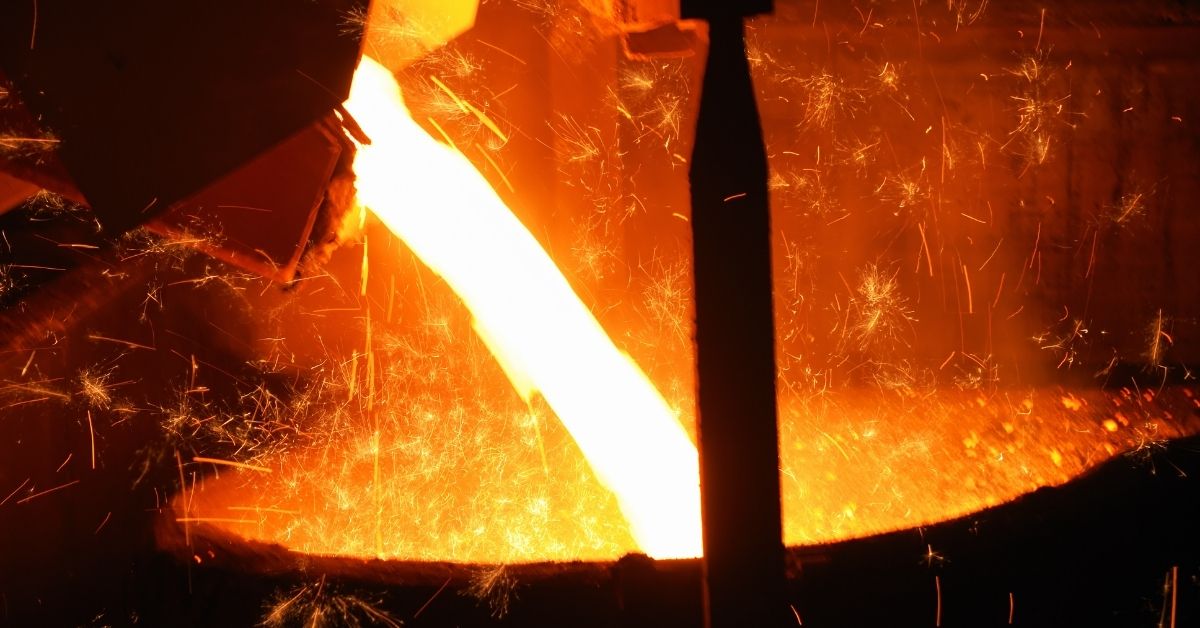Unless you spend your weekends watching medieval action movies, you’ve likely never heard of the term “smelting”. No, this is not a typo, it’s a process that produced the metals blacksmiths needed to create swords and knives. Read on to find out what smelting is, how it works, and why it plays an important role in history.
Smelting Defined
Smelting is the process of extracting a metal from its ore. Hearing this, you might picture simply separating a piece of metal from a huge chunk of rock, but there’s more to it. Ore is not just a mixture of rock and metal. The metal found in an ore is often oxidized so you need a chemical transformation to strip the oxygen away. As such, the ore containing the metal must be dumped into a blast furnace along with fuel and flux (A chemical cleaning agent).
As the ore is heated in the furnace, molten metal will drip down into a “bloom”, which is a blob of hot metal that you pull out with tongs. Besides extracting the metal you want, you’ll also get slag, which are the impurities that are separated from the ore.
The Challenges of Smelting
Smelting can be an incredibly challenging process. First off, there is no guarantee you will get the metal you want when smelting. You might go through the whole process of collecting an ore and smelting only to end up with a piece of slag. Second, forging your newly extracted metal into any sort of shape can be exhausting. You might have to pound a piece of metal for hours, reheat it, and pound it some more to get it into a somewhat usable shape.
A History of Smelting
Smelting has been used throughout history to create important tools and weapons. The process can be traced back all the way to 5000 BCE where the first metal, copper, was smelted in the Middle East. The discovery of metals like copper and bronze had a significant impact on human history. These metals were strong enough to create weapons like battle axes, spears, and arrow points in addition to helmets, shields, greaves, and other body armor. Bronze also grew to replace organic materials like stone and wood in tools and household utensils like knives, chisels, jugs, cooking pots and saws.
Smelting plays such a vital role in history that scholars typically divide ancient history into the Stone Age, Bronze Age, and Iron Age. The final age of iron led to important technologies like steel that are still used in manufacturing and civil engineering.
In Summary
All in all, smelting has greatly shaped the world we see around us today. Without it, many of the tools and infrastructure we depend on for survival would not exist.












